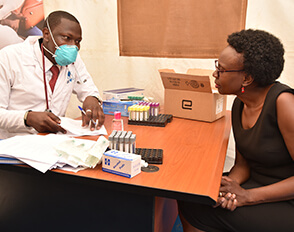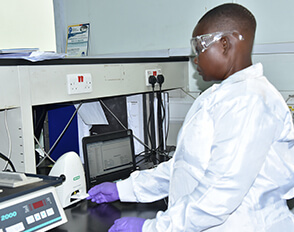Vulnerable population tuberculosis anti-retroviral (VirTUAL Project)
Mission
To combine clinical and mathematical approaches to investigate complex clinical challenges.
The primary objective
To determine the optimal dose of atazanavir (boosted with ritonavir) when used in combination with rifampicin-based TB treatment in children, adolescents, and pregnant or breastfeeding women.
The secondary objectives
- To combine population pharmacokinetic (pop-PK) and physiologically based pharmacokinetic (PBPK) modelling with a dose-escalation clinical trial and an observational study in patients falling into the ‘special populations.
- To use PK models to predict dosing in the special populations of pregnancy, breastfeeding, childhood and adolescence.
- To investigate the effect of rifampicin-based TB treatment on the intracellular pharmacokinetics of boosted protease inhibitors, such as atazanavir (ATV).
- To develop pharmacometric models to predict and describe all potential second-line ART regimens (in LMIC) for use in combination with TB treatment – ATV/r data from WPs 2 and 5, LPV/r data from WP5 (building on models developed and published by VirTUAL investigators, DTG data from WP 2.
- To describe the pharmacokinetics (plasma and intracellular) of high dose RIF in combination with bPI and DTG.
- To develop pharmacometric models to predict and describe all potential second-line ART regimens for use in combination with TB treatment in LMIC.
- To describe the pharmacokinetics (plasma and intracellular) of high dose rifampicinin combination with atazanavir and dolutegravir.
- To develop capacity, tools and a collaborative network/ platform for rapid evaluation of drugs in pregnancy and infants/ children based on sparse sampling.
- To develop a cohort of African scientists with proficiency in PK modelling techniques.
This will be accomplished through five work packages:
- Physiologically based pharmacokinetic (PBPK) modelling, led by Marco Siccardi, University of Liverpool, UK.
- Dose escalation study (DERIVE trial), led by Henry Mugerwa, Joint Clinical Research Centre, Uganda.
- Intracellular pharmacokinetics, led by Antonio D’Avolio, University of Turin, Italy.
- Population pharmacokinetic (pop-PK) modelling, led by Paolo Denti, University of Cape Town, South Africa.
- Observational pharmacokinetic study in special populations, led by Catriona Waitt, University of Liverpool/ Infectious Diseases Institute, Kampala, Uganda.
- Capacity building, led by Mohammed Lamorde, Infectious Diseases Institute, Kampala, Uganda.
- Communications and Stakeholder Engagement, led by Catriona Waitt
The website is here: https://virtualconsortium.org/
And twitter is: @VirTUAL_UoL






